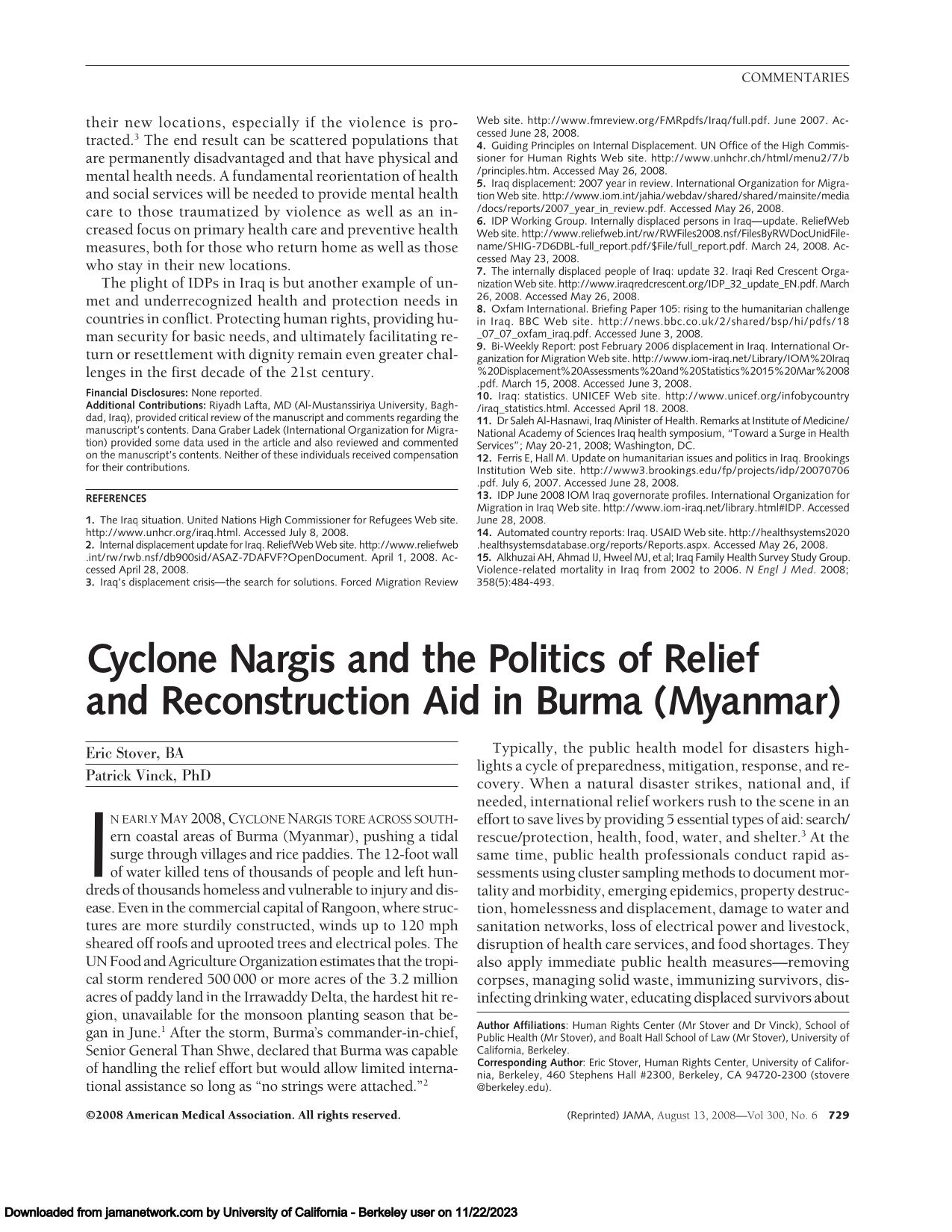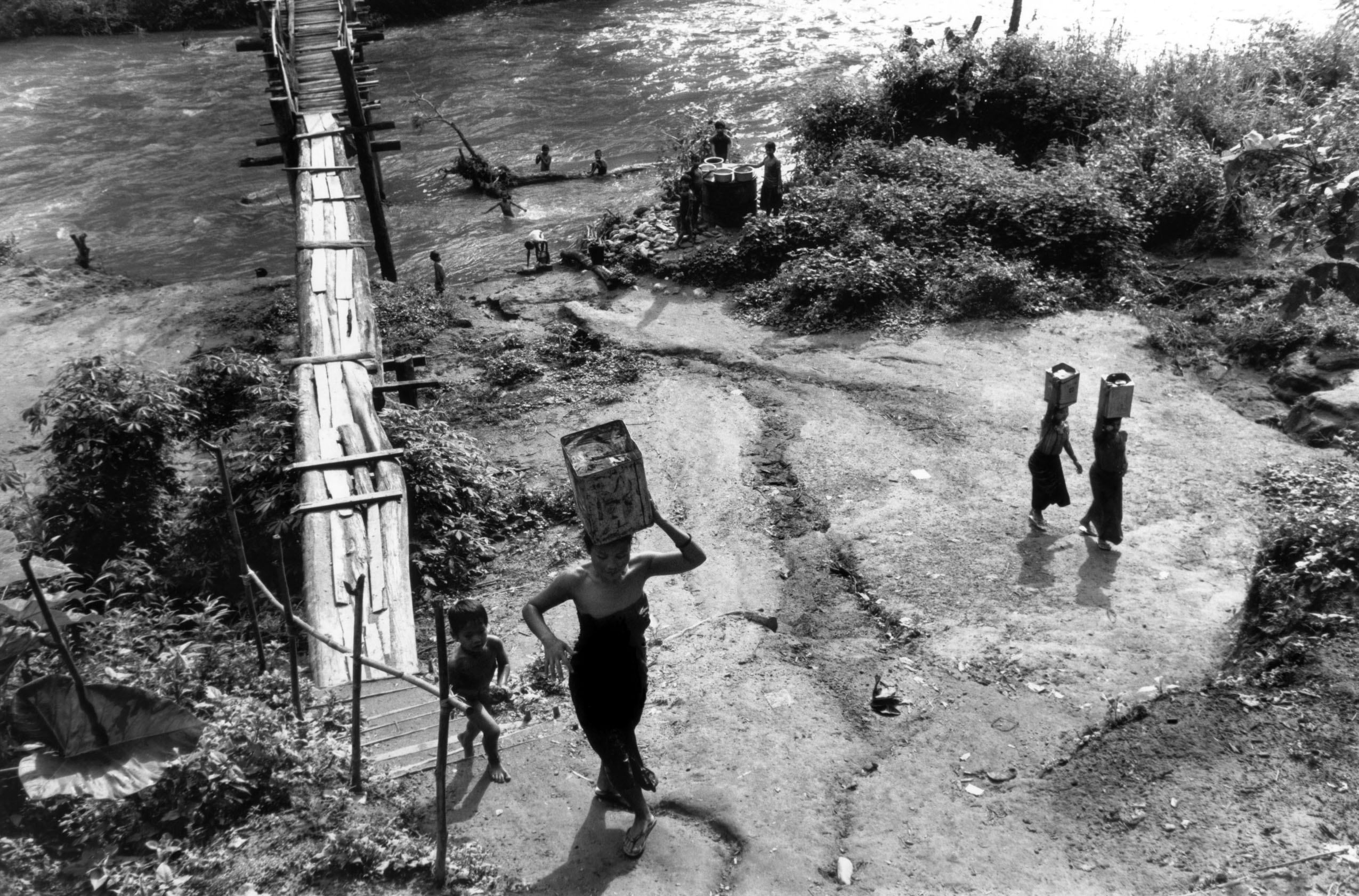Cyclone Nargis and the Politics of Relief and Reconstruction Aid in Myanmar
Summary
In early May 2008, Cyclone Nargis tore across southern coastal areas of Myanmar, pushing a tidal surge through villages and rice paddies. The 12-foot wall of water killed tens of thousands of people and left hundreds of thousands homeless and vulnerable to injury and disease. Even in the commercial capital of Rangoon, where structures are more sturdily constructed, winds up to 120 mph sheared off roofs and uprooted trees and electrical poles. The UN Food and Agriculture Organization estimates that the tropical storm rendered 500 000 or more acres of the 3.2 million acres of paddy land in the Irrawaddy Delta, the hardest hit region, unavailable for the monsoon planting season that began in June. After the storm, Myanmar commander-in-chief, Senior General Than Shwe, declared that Myanmar was capable of handling the relief effort but would allow limited international assistance so long as “no strings were attached.”

